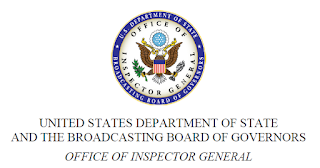Merging the elements of the influence battle is not so easy.
Two of the principle elements in this battle are MISO and PAO. MISO is proud of
our role as ‘changing behavior’ or inducing the target audience in such a way
so as to facilitate the execution of the CDR’s mission.
PAO on the other hand has maintained that they are pure information
providers, not influencers. Long time strategist James P. Farwell and his
colleague Rich Galen published an article January 15, 2013: “The Pentagon’s
Public Affairs Battle” (you can find it at http://nationalinterest.org/commentary/the-pentagons-public-affairs-battle-7971
or http://www.defenceiq.com/defence-technology/articles/the-pentagon-s-public-affairs-battle/?goback=.gde_1878638_member_209215343
or a number of other places.
The article starts out by addressing the DoD abandonment of
the term “Strategic Communications” and goes on to provide a couple of good
examples of how the PAO functioned as a spinner of information rather than a
pure conduit of it.
The article goes on to make a powerful argument for the need
for a cohesive communication strategy and closes by stating that “Military
officers are neither recruited, nor for the most part naturally gifted, for
what is at heart political communication—influencing the attitudes, opinions,
and beliefs of a populace to support military strategy.” Of course this implies
that DoD shouldn’t meddle in such important matters.
The article is good as far as it goes, but it frankly doesn’t
go that far. There seems to be a vacuum at the top. Who (which cabinet
department) is responsible for Communications Strategy (CS)? There is no doubt
that the Department of State is the Executive Authority as the President’s lead
diplomat, however, no such strategy has materialized from them. The picture
gets even cloudier as you venture further from Washington, DC.
If the US is invited into a country to help restore order
does the Ambassador set the Communications Strategy or does the Task Force CDR
whose forces are engaging with the population? Can the Task Force have its own
Communications Strategy?
If the US is part of an alliance or coalition such as we are
in Afghanistan do we relegate our national communications goals and objectives
in favor of those promulgated by the alliance?
Who is the DOD top dog for communications strategy and how
does that spider web its way down to the BCT?
I think these are pretty good questions which need to be
answered. Perhaps our new Secretary of State, Mr. Kerry can jump on these with
his new DOD counterpart once the latter starts work.
Photo Source: The Author



